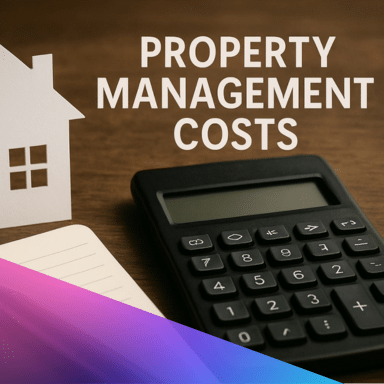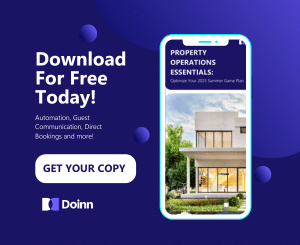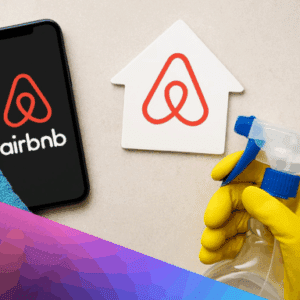The Essential Guide to Property Management Costs 2025

Are you ready for the changing landscape of property management costs in 2025? Rising expenses and shifting trends are making it more important than ever for property owners and managers to rethink their budgets.
This essential guide will break down every aspect of property management costs, showing you exactly where your money goes, and how you can save. With automation and tech tools like Doinn, you can streamline operations, cut unnecessary expenses, and stay ahead of industry changes.
Inside, you will discover the latest fee models, hidden and emerging costs, the impact of automation, regional trends, and how to measure the real ROI of your property management services. Get expert insights to help you make smarter, more profitable decisions.

Understanding Property Management Cost Structures in 2025
Navigating property management costs in 2025 requires more than just knowing the price tag. With rising expenses and evolving service models, property managers must understand both traditional fees and the ways automation tools are reshaping the landscape. Let’s break down what you need to know to make smart, tech-forward financial decisions.
Overview of Common Fee Models
Property management costs typically fall into three main fee structures. Percentage-based fees are the most common, ranging from 6 to 12 percent of monthly rent. In some competitive markets, rates can be as low as 3.75 percent or as high as 14 percent. Flat-rate fees, often $100 to $200 per unit per month, offer predictability, while hybrid models blend both approaches for flexibility.
Here’s how these compare for a $1,500/month rental at an 8 percent management fee:
| Fee Model | Example Cost | Pros | Cons |
|---|---|---|---|
| Percentage-based | $120/month | Scales with rent, common | Less predictable if rents vary |
| Flat-rate | $100–$200/unit | Predictable, easy budgeting | May not scale with property size |
| Hybrid | Varies | Flexible, customized | Complex to calculate |
Automation platforms like Doinn make it easier to analyze and compare these options, helping managers optimize property management costs regardless of the chosen model.
Additional Standard Fees
In addition to base fees, property management costs often include several standard charges. Leasing or tenant placement fees typically run 50 to 100 percent of one month’s rent. Lease renewal fees range from $200 to $500, while onboarding or setup fees can be anywhere from $0 to $500 depending on service complexity.
Other common charges include vacancy fees, which compensate managers when units are empty, and maintenance markups that add 10 to 25 percent to vendor invoices. Automation tools reduce administrative overhead by streamlining billing and tracking, making it easier to spot these fees and negotiate better terms.
By leveraging technology, property managers can minimize manual oversight, identify hidden costs, and ensure more transparent property management costs for every stakeholder.
Regional and Market Influences
Regional differences play a major role in shaping property management costs. Local labor rates, regulatory requirements, and climate-driven maintenance all impact pricing. For example, markets like San Francisco, Boston, and New York often see higher fees due to strict regulations and elevated living costs.
The type of property also influences expenses. Commercial and luxury properties typically incur higher costs, while short-term rentals may require more frequent service. In Florida, weather-related maintenance pushes fees higher than the national average. For a detailed local breakdown, see the property management cost breakdown in Florida 2025.
Smart managers are turning to automation platforms to adapt to regional challenges, using real-time analytics and task automation to keep property management costs under control, no matter the market.
Hidden and Emerging Property Management Costs
Understanding hidden and emerging property management costs in 2025 is essential for anyone seeking to optimize their investment returns. As the industry evolves, managers face new expenses that go beyond traditional fee structures. Automation and tech tools, such as those offered by Doinn, are now pivotal in helping managers reduce these costs and maintain profitability.
Unpacking Additional and “Hidden” Fees
Property management costs often extend beyond base fees. Managers should watch for marketing and advertising expenses, such as professional photography or premium listings, which can range from $100 to $500 per property. Inspection fees, commonly $50 to $150 per visit, may be charged multiple times a year.
Reserve fund requirements are another consideration, with many firms holding $250 to $1,000 per property in trust for unforeseen repairs. Legal and eviction processing fees, either flat or hourly, can accumulate quickly, especially in litigious markets. Early contract termination fees, typically 1 to 3 months’ management fees, may be buried in contracts. By leveraging automation, managers can better track and forecast these hidden property management costs.
Technology and Compliance-Driven Expenses
New compliance regulations are driving up property management costs, especially in cities with strict rental laws. Enhanced insurance requirements and increased liability coverage are also becoming standard, impacting monthly budgets. Over 70 percent of managers now offer enhanced inspection and compliance services, often as a response to regulatory demands.
Adopting automation tools helps managers navigate these challenges efficiently. Platforms like Doinn streamline compliance tracking and automate documentation, reducing manual labor and costly errors. To explore more on optimizing operations and staying ahead of compliance-driven costs in 2025, see the Property operations essentials for 2025 report.
Maintenance and Repair Cost Trends
Maintenance and repair expenses are a significant component of property management costs. Proactive, preventive maintenance is increasingly favored over reactive repairs, as it reduces both emergency expenses and tenant turnover. Inflation and ongoing supply chain issues are pushing up the price of materials and labor, making cost control more challenging.
Automation platforms help by scheduling regular inspections and flagging issues before they escalate. This data-driven approach allows for better budgeting and fewer surprises. In 2025, property management costs will be significantly affected by how well managers use technology to anticipate and mitigate maintenance risks, ensuring long-term savings and tenant satisfaction.
The Role of Automation and Technology in Reducing Property Management Costs
Property management costs are rising, but automation and technology are transforming how managers control expenses. In 2025, leveraging modern tools is no longer optional, it is essential for competitive, cost-effective operations. Automation helps property managers streamline daily tasks, reduce manual errors, and unlock new efficiencies, shaping a future where overhead is minimized and service quality is maximized.
How Automation Tools Streamline Operations
Automation tools are redefining property management costs by simplifying complex workflows. AI-powered scheduling assigns cleaning and maintenance tasks efficiently, ensuring nothing falls through the cracks. Staff management platforms allocate resources based on real-time demand, reducing idle time and overtime expenses.
Integrating automation tools with Property Management Systems (PMS) allows instant updates on rent collection, maintenance requests, and lease renewals. For example, automated rent collection eliminates manual tracking, while maintenance requests are logged and dispatched instantly, reducing administrative labor and costly delays.
Task tracking and digital checklists ensure every step is completed and documented. This level of oversight minimizes errors, helps maintain compliance, and supports better communication between teams. The result is a measurable reduction in property management costs, regardless of portfolio size.
Cost Savings and ROI from Tech Adoption
Adopting automation delivers significant savings on property management costs. On average, property managers save up to 40 hours each month by automating scheduling, reporting, and communications. This efficiency translates to a threefold reduction in operational expenses compared to manual processes.
Centralized dashboards offer real-time financial and operational analytics, helping managers monitor expenses closely. Proof of service completion, such as photos and timestamps, reduces disputes and follow-up calls. These improvements not only cut costs but also enhance transparency with property owners and tenants.
By leveraging data-driven insights, property managers can identify inefficiencies, optimize budgets, and plan for future growth. Automation ensures that every dollar spent on property management costs delivers the highest possible return on investment.
How Doinn Helps Property Managers Cut Costs
Doinn’s AI-powered platform is designed specifically to reduce property management costs for short-term rentals and coliving spaces. The platform automates scheduling, staffing, and quality management, seamlessly integrating with existing PMS solutions to eliminate repetitive tasks and human error.
Real-time analytics and reporting empower managers to track spending, identify cost-saving opportunities, and optimize service quality. Multilingual team messaging and instant mobile notifications keep everyone aligned, minimizing costly miscommunications.
Companies using Doinn report over 50 percent improvement in operational efficiency, a significant drop in overtime, and higher tenant satisfaction. With a free trial and customizable pricing, Doinn offers property managers a direct path to scalable, sustainable cost reduction.
Factors Influencing Property Management Fees in 2025
Understanding what drives property management costs in 2025 is crucial for every property owner and manager. Several factors directly affect pricing, from the range of services you select to the technology your management company employs. Let’s break down the most influential elements shaping property management costs this year.
Service Scope and Customization
The breadth of services your management company provides is one of the largest drivers of property management costs. Full-service packages typically include rent collection, tenant screening, maintenance coordination, and legal support. These comprehensive options may initially appear more expensive, but they often reduce risk, tenant turnover, and unexpected expenses.
Alternatively, à la carte offerings allow you to select only the services you need, which can help control property management costs for smaller portfolios. For example, a landlord may self-manage maintenance yet outsource tenant screening and rent collection. Automation platforms such as Doinn enable managers to customize service packages and streamline operations, ensuring every dollar spent delivers measurable value.
Property Characteristics
The size, type, and location of your property also play a significant role in determining property management costs. Residential, commercial, luxury, and short-term rental properties each present unique challenges. Larger or geographically dispersed portfolios often require more robust management solutions, which can increase fees.
Commercial properties, in particular, tend to incur higher property management costs due to complex lease agreements and regulatory requirements. By leveraging automation tools, managers can reduce manual workload and scale services efficiently, regardless of property type or location.
Experience and Reputation of Management Company
Choosing an experienced and reputable management company can impact your property management costs in several ways. Established firms with advanced technology and strong track records may charge premium rates, reflecting the added value of efficient operations and lower risk.
On the other hand, new entrants may offer lower fees but might lack the resources or automation capabilities to keep costs low in the long run. Tech-forward companies like those using Doinn harness automation to deliver high-quality service at competitive rates, minimizing errors and maximizing efficiency for property owners.
Market Trends and Economic Factors
Wider market forces also shape property management costs in 2025. Inflation, labor shortages, and ongoing supply chain disruptions continue to push up expenses for both property managers and service vendors. Regional demand for rentals, as well as differences between urban and suburban markets, influence the average fees charged.
For a data-driven overview of these evolving trends, see Property management industry statistics 2025. Understanding these shifts, along with strategic use of automation, helps property managers stay competitive and cost-effective in a changing landscape.
Calculating the True ROI of Property Management Services
Understanding the true return on investment (ROI) from property management services goes beyond just reviewing monthly invoices. With the rapid adoption of automation and tech tools, evaluating property management costs requires a closer look at both tangible and intangible value. Let’s break down the key components that impact ROI in 2025.
Time and Opportunity Cost Analysis
Calculating ROI starts with quantifying the time landlords save by outsourcing. For example, if a landlord spends 10 hours monthly managing a property, and values their time at $100 per hour, that’s $1,000 in opportunity cost. Compare this to a professional management fee of 8% on a $1,500 rent ($120), and the value becomes clear.
Automation further amplifies these savings. By leveraging AI-driven tools, managers can automate rent collection and maintenance scheduling, reducing manual tasks and freeing up significant hours each month. According to the impact of automation on property management costs, tech adoption is now a primary driver of operational efficiency and cost reduction.
Impact on Tenant Quality and Retention
Quality tenants and low turnover are vital to maximizing income and minimizing property management costs. Professional screening processes, often enhanced by automation, help reduce the risk of costly evictions, one bad tenant can result in losses exceeding $7,000.
Top management firms report less than 2% delinquency rates, thanks to robust screening and proactive communication. Automated reminders and digital lease renewals also keep tenants engaged, lowering vacancy rates and improving rent collection. These improvements directly increase the ROI of property management services.
Legal and Compliance Risk Mitigation
Staying compliant with evolving rental regulations is complex and time-consuming. Property managers equipped with compliance-focused automation tools can help landlords avoid fines, lawsuits, and administrative errors.
For example, in cities like New York and Los Angeles, where regulations change frequently, expert managers use tech platforms to monitor legal requirements, submit documents on time, and track compliance tasks. This proactive approach reduces legal risks and protects owners from unexpected property management costs.
Financial Reporting and Tax Advantages
Accurate financial reporting is essential for maximizing deductions and analyzing investment performance. Automation platforms streamline documentation, generate real-time reports, and centralize data for portfolios of any size.
Landlords who adopt property management tech stacks, such as those explored in the tool stack for vacation rental business, benefit from improved transparency and organization. Missed deductions due to poor record-keeping can cost thousands annually, so leveraging digital tools directly enhances ROI.
Strategic Steps to Minimize Property Management Costs in 2025
Managing property management costs efficiently in 2025 requires a strategic blend of technology, careful evaluation, and ongoing optimization. By following these essential steps, property owners and managers can keep expenses in check while maximizing the value of professional management.
Step 1: Audit and Compare Fee Structures
Start by requesting detailed quotes from multiple property management companies. Scrutinize each contract to identify hidden or extra charges that might inflate property management costs over time.
- Compare industry benchmarks, such as the standard 8.49% average fee.
- Make use of tables to analyze differences in service levels and pricing.
- Ensure you understand the full breakdown of services included.
This initial audit helps you avoid unexpected expenses and makes it easier to negotiate better terms.
Step 2: Leverage Automation and Technology
Implementing automation tools is one of the most effective ways to reduce property management costs. Platforms like Doinn allow managers to automate scheduling, staff coordination, and maintenance tracking, leading to significant savings.
| Task | Manual Process (hrs/mo) | Automated Tools (hrs/mo) |
|---|---|---|
| Rent Collection | 8 | 1 |
| Maintenance Requests | 10 | 2 |
| Scheduling/Staff Mgmt | 12 | 2 |
Switching to automation frees up valuable time, reduces administrative overhead, and minimizes costly errors.
Step 3: Optimize Service Packages
Tailor your management package to fit your specific needs. Avoid overpaying for features you do not use by negotiating customized service bundles.
- Select only essential services, such as tenant screening or rent collection.
- Consider self-managing certain elements if you have the expertise.
- Outsource specialized tasks to reduce risk and improve outcomes.
This approach ensures your property management costs are aligned with your investment goals.
Step 4: Plan for Preventive Maintenance
Schedule routine inspections and proactive repairs to prevent expensive emergencies. Using digital tools to track maintenance ensures nothing is overlooked and helps lower long-term property management costs.
- Automate reminders for inspections and service appointments.
- Keep digital records for warranty tracking and compliance.
- Focus on preventive actions to reduce tenant turnover and repair bills.
This step not only preserves asset value but also supports tenant satisfaction.
Step 5: Monitor and Adjust Regularly
Regularly review management reports and analytics to spot inefficiencies. Leverage real-time dashboards to track expenses and identify opportunities to further automate processes, keeping property management costs under control.
For additional strategies, explore the Property operations blog category for up-to-date best practices and expert advice.
Adjust your service scope and provider choices as your portfolio evolves, ensuring continuous cost optimization.
Now that you have a clear picture of the true costs and complexities of property management in 2025, and how automation can help you stay ahead, it’s the perfect time to take the next step. If you want a deeper dive into proven strategies, industry trends, and expert tips to optimize your operations and cut unnecessary expenses, I recommend you download our property operations guide. This comprehensive report will help you make informed decisions, maximize ROI, and confidently navigate the evolving property management landscape with practical, actionable insights.










